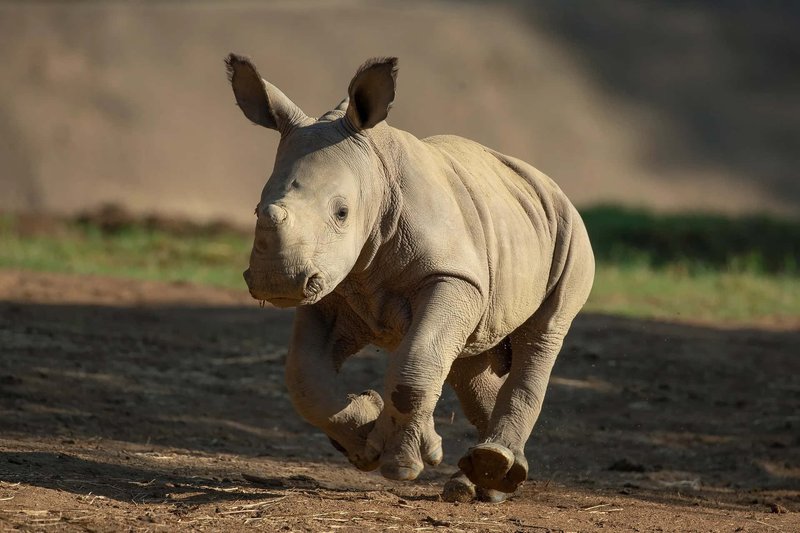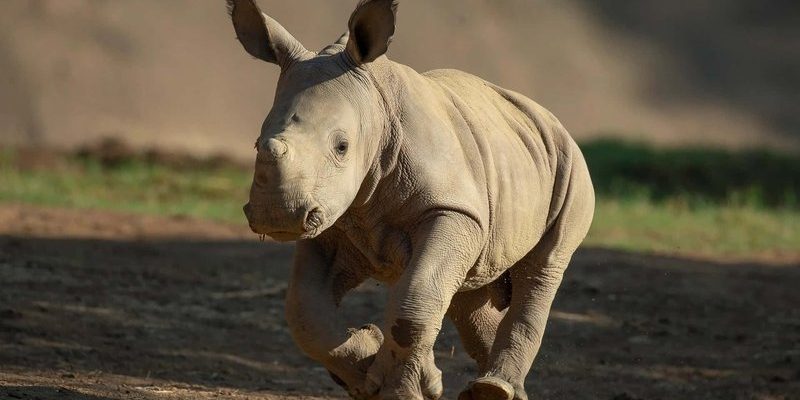
Imagine the white rhino as the gentle giant of the animal world, moving through their habitat with both grace and purpose. While they might struggle with problem-solving like a crow or demonstrate social intelligence as elephants do, they possess a unique set of skills required for survival and interaction. Their smarts might not be flashy, but they sure show a different kind of intelligence that’s both fascinating and vital for understanding these magnificent animals. Let’s dive deeper into the cognitive abilities and behaviors of white rhinoceroses and what makes them tick.
Understanding White Rhinoceros Behavior
White rhinos are intriguing creatures, and studying their behavior reveals a lot about their intelligence. They are social animals, often found in groups, showcasing their awareness of surroundings and social dynamics. Lives spent in family units help them develop social hierarchies where younger rhinos learn from older ones.
You might be wondering how this social structure plays out. Well, these groups typically consist of mothers and calves, with young males eventually leaving to establish their territories. By living in groups, white rhinos can share information about food sources, danger, and more. This communal living not only offers protection but also encourages learning and adaptation.
Interestingly, white rhinos have excellent memories. They can remember the locations of waterholes and feeding grounds, which is crucial in their harsh habitats. Think of it like knowing where your favorite coffee shop is—once you find that perfect spot, you tend to remember it forever!
Communication: More Than Just Grunts
You might not associate rhinos with sophisticated communication, but they actually have various methods to express themselves. White rhinos communicate through a range of vocalizations, from grunts to snorts, and even softer sounds that might surprise you.
Besides vocal sounds, they use body language and scent marking as well. When a rhino rubs its body against a tree or a rock, it’s leaving behind scent markers. These scents provide crucial information to other rhinos, telling them about their presence and even their reproductive status. It’s like leaving a social media post, announcing, “I’m here, and this is what’s happening with me!”
This combination of sounds and scents showcases their ability to navigate social interactions. It might not be a complex drama of Shakespeare, but it’s certainly filled with its own nuances.
Problem-Solving Skills
When it comes to problem-solving, white rhinos aren’t typically known for solving puzzles like you see with primates. However, they do possess certain skills that demonstrate their ability to adapt to environmental challenges. For example, if a white rhino encounters a barrier, they intelligently find alternative routes.
Their thick skin—though it might look like armor—has a tactile quality that helps them feel their environment. This means they can engage with their surroundings in ways that promote discovery. In a sense, their problem-solving is more about practical survival than intellectual challenges. If you think of it like navigating a maze, they might not solve the route intricately, but they sure know how to find their way through!
Memory and Learning
Memory is a fundamental aspect of intelligence, and white rhinos have demonstrated strong capabilities in this area. Research indicates that they have impressive long-term memories, crucial for their survival in the wild. For instance, they remember the locations of safe havens from predators, which could mean the difference between life and death.
Learning through observation plays a big part in their development too. Young rhinos learn behaviors from their mothers, such as identifying food sources and social interactions. Imagine a child watching their parent prepare dinner; they’re likely to pick up skills and habits that last a lifetime. Similarly, young rhinos glean knowledge through watching their elders, which is critical for their growth and adaptation.
This memory and learning capacity highlight their adaptability, showing that, while they may not solve intricate puzzles, they can learn and remember what’s necessary for their survival.
Emotional Intelligence: Understanding Rhinos
Have you considered that white rhinos might have emotional intelligence? They certainly exhibit emotions in social settings. When a calf is separated from its mother, it often shows signs of distress. This emotional response isn’t just a simple reaction; it’s a clear indicator of their ability to form strong bonds and recognize the feelings of others.
White rhinos also display protective behaviors. Mothers are fiercely protective of their young, defending them from threats without hesitation. This strong bond showcases a level of empathy and understanding of family dynamics. You could think of them as parents who instinctively know when their child is in danger and spring into action.
By recognizing these emotional aspects, we can better appreciate the complexity of their social structure and interactions. Just like us, they experience fear, joy, and the need for connection—an essential part of their intelligent behavior.
The Role of the White Rhinoceros in Their Ecosystem
Understanding the white rhino’s intelligence is vital, but so is recognizing their role in the ecosystem. Their grazing habits help maintain the grasslands where they live, impacting other species that share their habitat. Essentially, these gentle giants are like nature’s gardeners, shaping their environment through their behaviors.
White rhinos can often be seen pushing over bushes to create new paths and clearings. This not only provides food for themselves but also opens up space for other animals. Their actions can create an entire community of life that thrives around their presence.
Recognizing their role in the ecosystem illustrates the importance of protecting them. The intelligence of white rhinos goes beyond individual survival; it influences the larger picture of biodiversity and environmental balance.
Conservation Efforts and Their Importance
As we learn more about the white rhinoceros, we must consider the pressing conservation issues they face. Unfortunately, poaching and habitat loss are significant threats. Understanding their cognitive abilities emphasizes the urgency of protecting these magnificent creatures.
Conservation efforts focus not just on protecting white rhinos but also on preserving their habitats and ensuring future generations can thrive. By creating protected areas and fostering sustainable practices, we can make a difference.
When you see conservation in action, it’s like watching a team come together with a common goal. Organizations work to educate communities about the importance of white rhinos and their ecosystems, ensuring that people recognize their value. Protecting intelligent beings means safeguarding a piece of our planet’s heritage, rich with complexity and connection.
In closing, understanding how smart a white rhinoceros is requires a look beyond traditional measures of intelligence. Their social structures, communication methods, problem-solving skills, and emotional bonds all reflect a level of cognitive ability worth valuing. By learning about and appreciating these traits, we can better advocate for their ongoing survival and the preservation of their habitats. After all, in the grand tapestry of life on Earth, every thread—especially that of the white rhino—counts.

